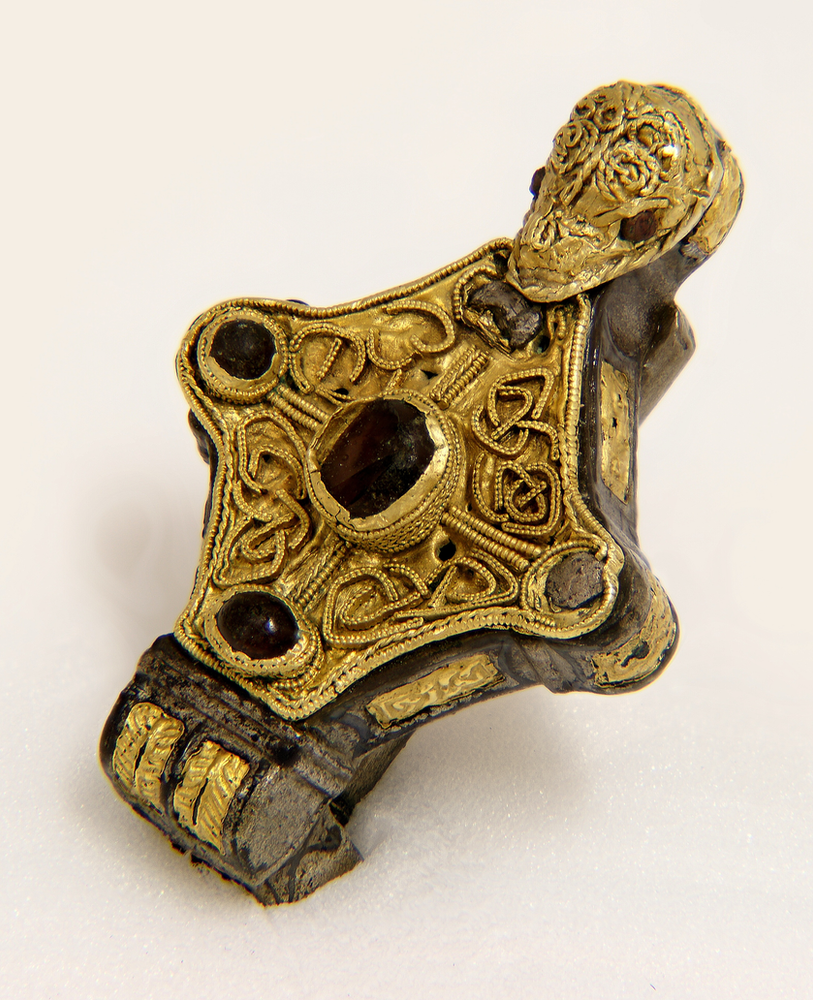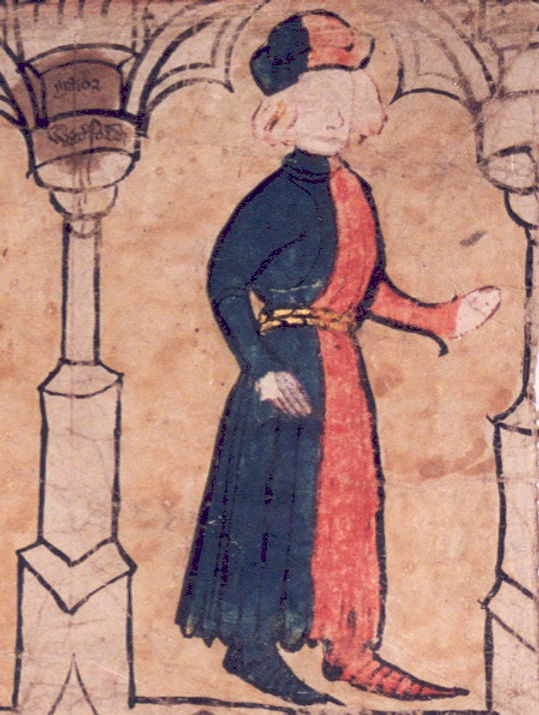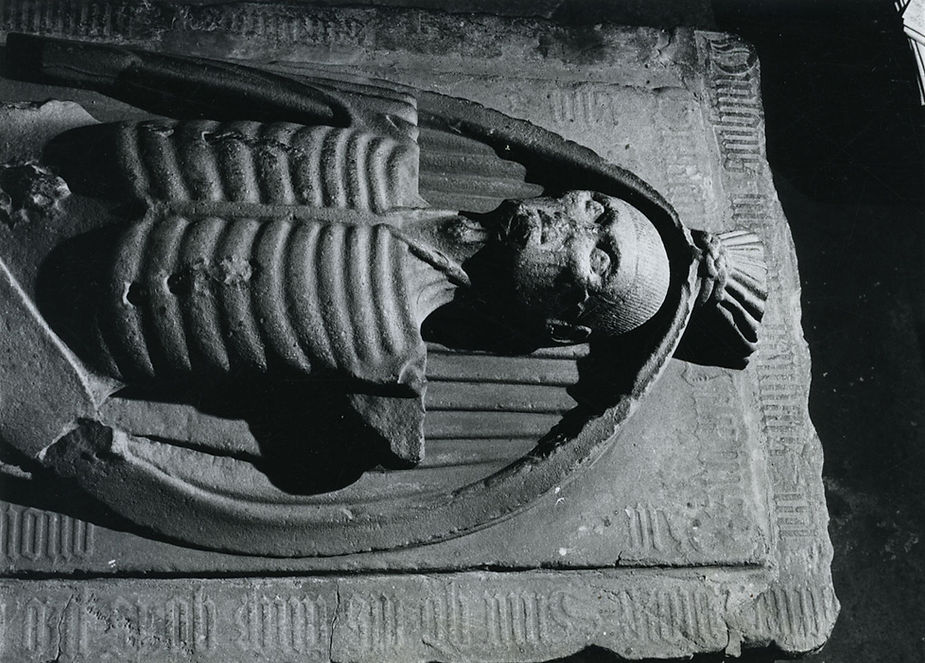
Today we’re gonna get a little spooky and look at one of the strangest fashions of the medieval period: the cadaver tomb!
If you walk into Christchurch Cathedral in Waterford you’ll see something a little unusual, a funeral effigy lies on your left-hand-side, but rather than a softly slumbering knight (as you will see on the right if you’re interested – but we’ll get to him another day), you’ll see a rotting corpse, replete with worms, toads and other gruesome details. The effigy depicts James Rice, eleven-times mayor of Waterford City as he was expected to look six months following his death, in a briefly fashionable funeral monument called a cadaver tomb.
Sometimes called a ‘transi’, the cadaver tomb came into fashion in the fifteenth century among the important and the well-to-do. The ultimate and original #HumbleBrag, these tombs were used to mark the owner’s humility in death and to symbolise the fact that death is the great equaliser. Funerary effigies were common throughout the medieval period, but they generally depicted the deceased as a ‘living image’ in a deep and peaceful slumber, untouched by the ages – in the fifteenth century, this all changed.
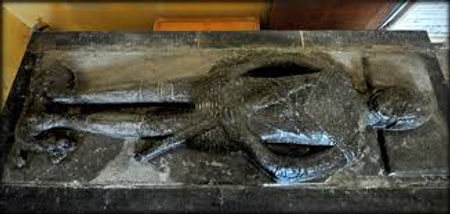
A more usual funeral effigy
Probably the most famous of these tombs belongs to René de Chalon, a Prince of Orange who died in 1544 at the young age of 25. An unusual tomb was requested by his wife (or possibly at his own request before his untimely death) which showed de Chalon as a life-size skeleton, with sculpted skin hanging from his bones in thin strips and in his outstretched hand he held a reliquary containing his own petrified heart. The monument was completed in 1547 by Ligier Richier who studied under Michaelangelo himself.
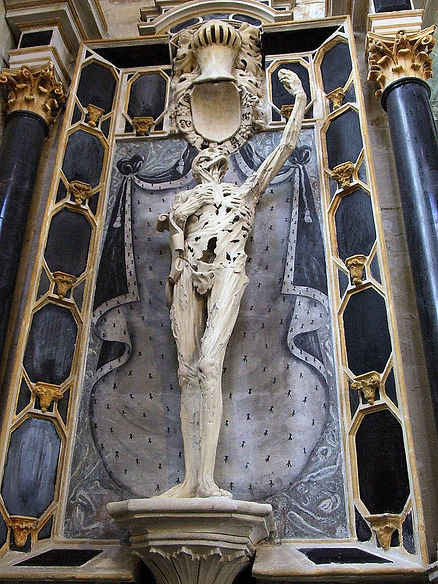
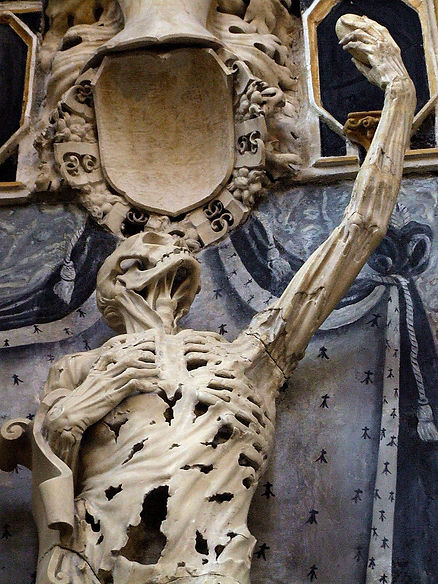
They were most popular in France, Italy and England, however there were cadaver tombs all over Ireland and eleven survive today. The oldest of these is at Stamullen, Co. Meath and was made around 1450.
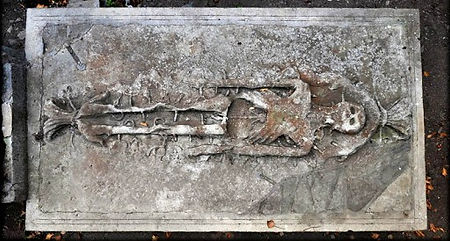
The Stamullen Effigy
The medieval period was a time when obsession or preoccupation with death reached an all-time high. The reasoning for this is simple: in 1347, the Bubonic Plague, otherwise known as the ‘Black Death’ tore across Europe, and in the six years of its height it killed about one third of Europe’s population. The prevalence of death had a marked effect on society, forcing people to accept that it was not just an inevitability for themselves, but for everyone.
Sickness and death were ever-present, with bodies piled in the street awaiting burial a common sight. In 1604, when another plague hit the city the Great Parchment Book of Waterford reports the death of 2256 inhabitants and at the high point ‘there dyed a month ago weekely a hundred and sixteen’. Even today, this is a huge number, 5% of the city’s population, but in 1604, according to sources, It could have been close to half the population of Waterford City. So we can scarcely imagine the suffering inflicted by the Great Plague of the fourteenth century.
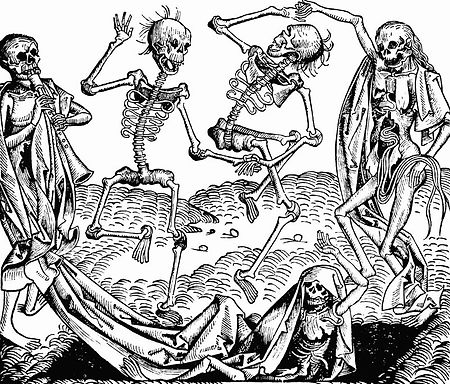
The Danse Macabre
The death and suffering wrought by this disease did produce a slightly unusual effect: a level of comfort and obsession with death never before seen in Europe. The plague was unusual in that it was something of a leveller, it didn’t just come for the poor, it could kill kings as easily as peasants. People became more interested in the macabre (goth goes mainstream for the first time essentially) and death invaded art. The most famous of these is the Danse Macabre – the dance of death.

The most famous Danse Macabre is this mural on the wall of St. Nicholas’s Church in Tallinn, Estonia which was painted by Bernt Notke
The cadaver tomb sprung from this same artistic movement, not quite a celebration, but certainly an acceptance of death in an era where it was frighteningly common.
So here we return to our dear friend James Rice, wine merchant, eleven-times Mayor of Waterford city and commissioner of our local cadaver tomb. As a merchant, James would have seen the beautiful and terrible cadaver tombs of the south of England, and for this reason, his is widely accepted to be the finest example in Ireland.
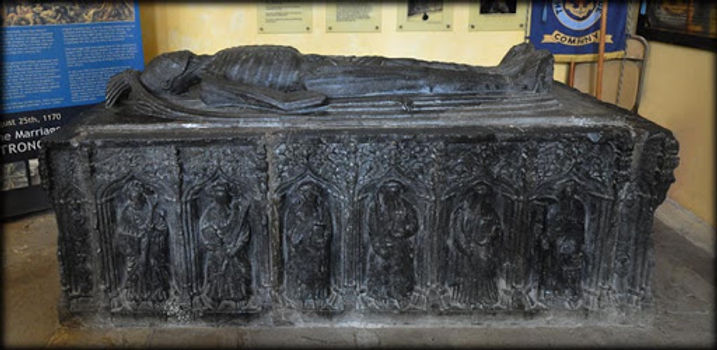
The tomb of James Rice and Elizabeth Broun
James lies in repose, his burial shroud wrapped delicately around his emaciated and almost skeletonised corpse. Worms wriggle about his chest, a toad sits on his stomach, creatures meant to horrify the viewer and acquaint them with the realities of death. Around his tomb we can see a depiction of the glory of saints with a poem serving as a final and chilling reminder that death comes for us all:
who e’er thou art who may be passing here
O read and pause a while and shed a tear
I was as thou art and thou yet shall be
What I am now, I prithee pray for me
Oddly, James only has ten ribs on either side (rather than the usual twelve) and these are fastened by a biologically unlikely straight sternum that looks almost like a strip down his torso. As well as that, he is the only cadaver effigy in Ireland to retain his eyeballs, and they stare unseeing to this day.
If you go to visit him you may also notice that his left arm is entirely missing. This is not an accurate depiction and at some point the arm was broken off and carried away, though we don’t know precisely what happened to it. After the demolition of the medieval cathedral (in which James lay in ‘James Rice Chapel’), the tomb was out in the open in the cemetery, where it possibly took some damage.

Look at that stare!
James shares his tomb with his wife, Elizabeth Broun, though she makes no appearance in the effigy – though women did embrace the transi along with their husbands.
In St. Peter’s Church of Ireland, Drogheda, in the wall of a churchyard stands another cadaver effigy, this time depicting Sir Edmund Golding and his wife Elizabeth Flemyng. The pair stand side by side in death, their shrouds opened to show them to us. Elizabeth is almost completely skeletonised, whereas her husband is clearly more recently dead, his belly swollen and distended with decomposition. This is probably because Elizabeth died well before her husband, and he survived to marry two more wives! Like James, the anatomy is all wrong (Elizabeth finds herself in possession of thirty-six ribs!!), suggesting that Irish artists did not study actual human anatomy like their European counterparts, and instead merely made the tombs to be aesthetically pleasing (to the tastes of the day) rather than correct.
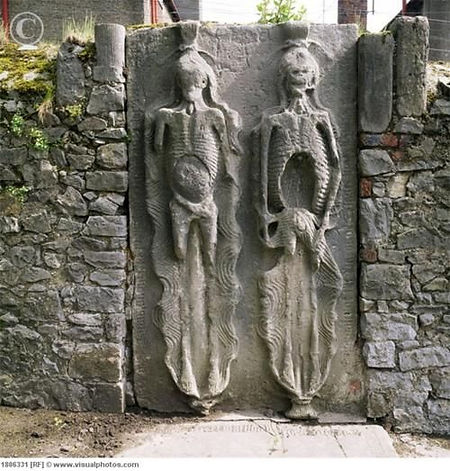
Historically, disease and sickness have spread fear and panic among society (sound familiar?), and often spur unusual effects. In this case, the plague killed millions of Europeans, wreaked havoc across the land, and irrevocably changed attitudes to death. From this, we get one of the more unique artistic movements in history, a movement where death, the figure and the state of being, take centre-stage. The cadaver tomb is very much of its time, few of us can imagine commissioning something like this today, but they served as a reminder that life is short and should be lived to the best of your ability (while also hopefully lessening the owner’s time spent in purgatory – humility is a one-way ticket to heaven after all!).
While cadaver tombs went out of fashion, the movement continued in many guises over the years, from vanitas still-life paintings about the futility of vanity in the face of certain eventual death, and the memento-mori movement – remember you will die.
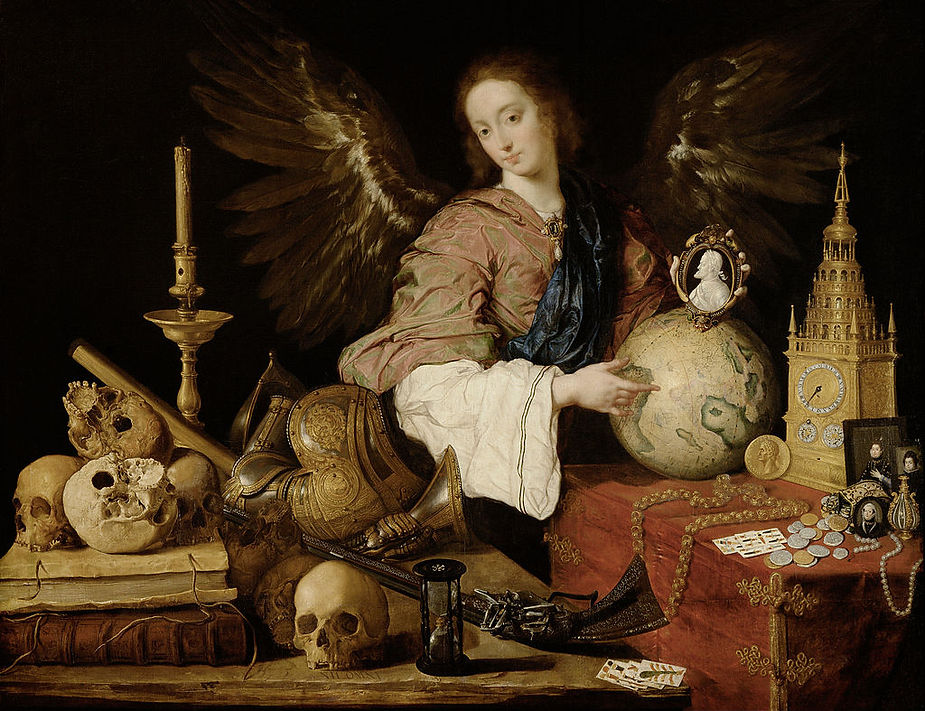
A Vanitas still-life by Antonio de Salgado
So, maybe don’t let the coronavirus panic you so much that you start planning your own funeral, but if you feel like it, there are some really cool tombs out there to take inspiration from!


